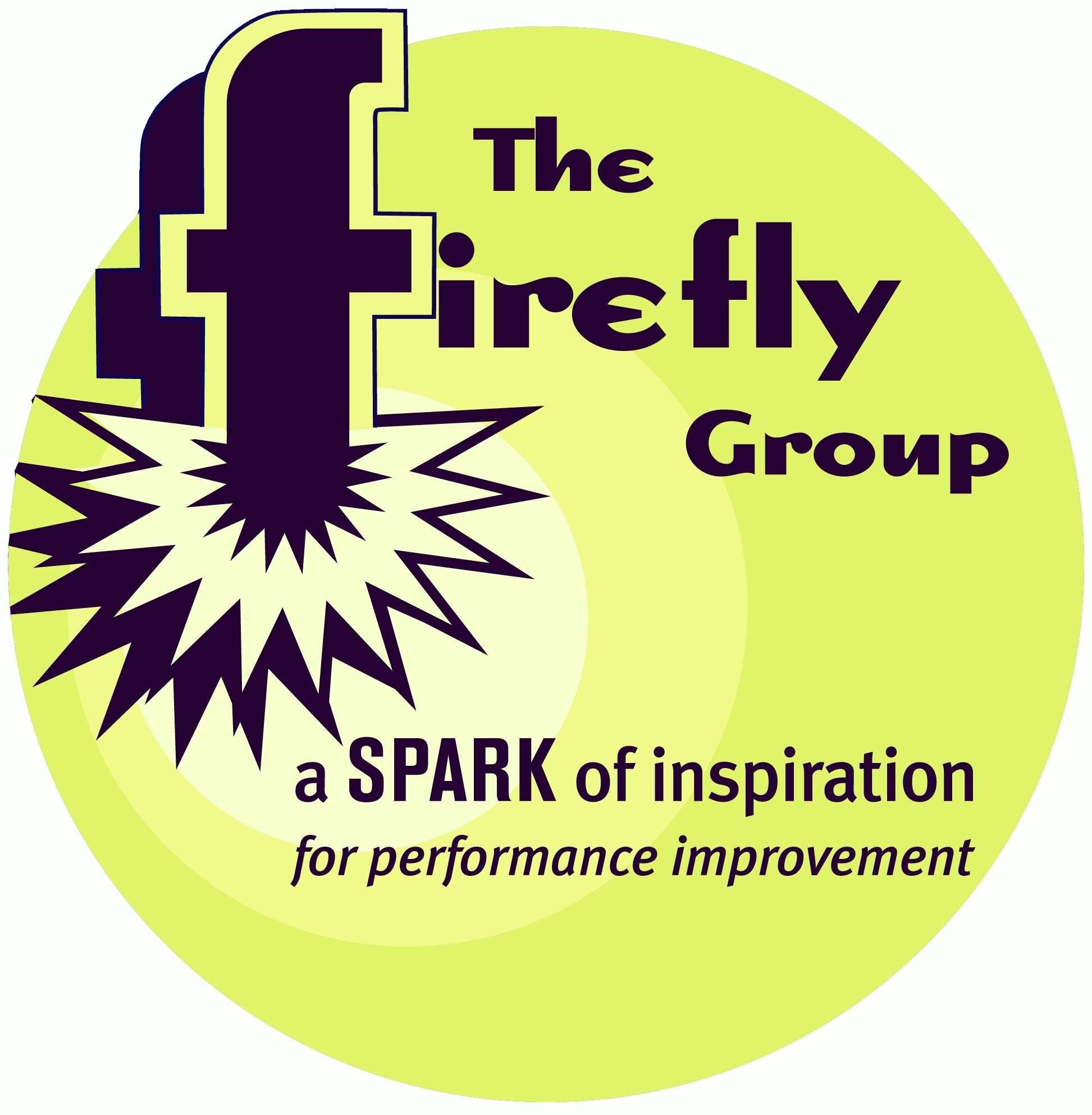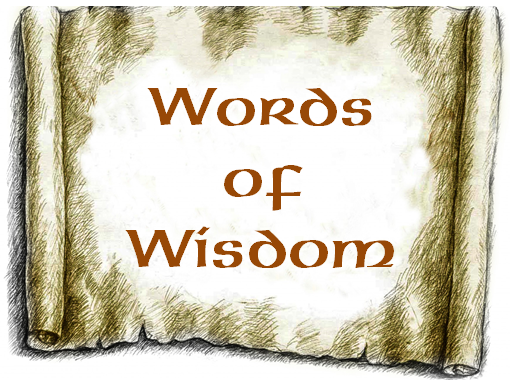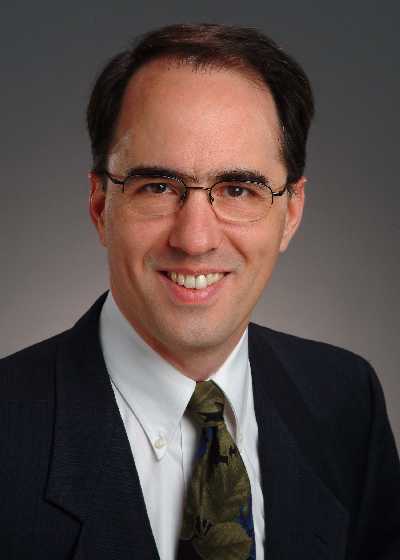

What's New

Words of Wisdom
52
cards and 15 activities to spark conversations and deepen learning.
Learn more HERE.
What We Do
The Firefly Group helps people use everyday situations for learning and connecting to the Big Picture. After working with Firefly, you will be energized with specific action steps to achieve your goals.
We do this through training of trainers, leadership development, performance improvement training, strategic planning, writing training manuals, and clarification of organizational mission and vision. Our methods are engaging, thought-filled, and results-oriented.
 If
this sounds like a good direction for your organization, let's talk about
how we might collaborate! Please give me a call (802.257.7247) or send an
. - Brian
If
this sounds like a good direction for your organization, let's talk about
how we might collaborate! Please give me a call (802.257.7247) or send an
. - Brian
 Your ETR (Estimated Time to Read): 10 minutes Your ETII (Estimated Time to Implement Ideas): 5 weeks |
January 2015
|
Say
It Quick |
Discoveries bits of serendipity to inspire and motivate |
Ideas fuel for your own continuous learning |
Activities tips and tricks you can try today |
| Whose Fault? | Strandbeests: Reinventing Life Forms | Who is "Eating" Whom? |
Change can be mutually infectious when we realize its circular nature. Learn more beginning with this 99-Word Story.
Whose Fault?
My friend Jean informed me that 25% of the pollution in California actually comes from China. The culprit? Coal-fired power plants. The Chinese plan to build more than 500 new coal power plants in the next 10 years!It's something of a relief to discover that we aren't responsible for all the pollution in California, that it isn't all our fault. In New England we often have to contend with the pollution from power plants in the Midwest. And I imagine that the pollution in Eastern Europe goes to… China?
Wow! What goes around keeps blowing around!
Strandbeests:
Reinventing Life Forms
Imagine thin tubes of PVC lashed together into a complex of struts supporting
a long row of spindly legs. Imagine too, a light-weight sail that turns a
crank and moves the legs of this contraption so it can saunter along a beach.
What would you call this thing that can sense when it is too close to the
water and turn away; that can store a source of air to power its own sail
when becalmed; that functions autonomously with no computer or electronics?
Its creator, Theo Jansen, would call it a "strandbeest." Jansen, a Dutch physicist turned engineer and artist, would also gladly take on the title of "creator" for himself - at least according to a story about him in The New York Times Magazine of November 30, 2014 by Lawrence Wechler titled "Theo Jansen's Lumbering Life-Forms Arrive in America."
Jansen originally conceived of his strandbeest creations as a solution to rising seas from global warming. Working on their own, strandbeests could continuously scoop up sand and deliver it to the top of dunes to protect The Netherlands' ever-sinking countryside. But along the way, Jansen has become consumed by the process of creation and the role of evolution in the ability to reach an ideal.
For example, in order to design a crankshaft that could power strandbeest legs that each have 13 segments, Jansen needed to determine the best configuration of those segments from billions of possibilities. He could have had his computer crunch out every option then determine the best - a process that would have taken years. Instead, he programmed his computer with an algorithm that would enable thousands of sets of configurations to compete against each other. The best performing configuration would eventually rise to the top.
Jansen used the principles of evolution - a set of basic rules, replication, competition, and randomization - to invent an automatic machine that moves and responds to environmental changes on its own. And, according to the article by Weschler, the movement of the strandbeests is remarkably graceful. See it for yourself in the video at this link.
You can also see the strandbeests up close as they tour the United States over the next two years in Miami Beach, Salem, Massachusetts, Chicago, San Francisco, and New York City.
"Theo Jansen's Lumbering Life-Forms Arrive in America," By Lawrence Weschler, The New York Times Magazine, Nytimes.com/magazine, November 30, 2014, Video of strandbeests in motion: http://www.nytimes.com/2014/12/07/magazine/the-strandbeests-arrive-at-art-basel.html?ref=magazine&_r=0
 Infectious
Change
Infectious
Change
"Everybody is either looking for food or trying to keep from being eaten."
That was the observation of our guide on a walk through the Amazon jungle and it was his explanation for why we needed to be absolutely silent if we wanted to see any wildlife. I was with a group of inner-city teens who were bubbling over with exuberance just to be removed from concrete and traffic. Walking silently was a challenge for them and we broadcast a clear warning to all the critters in our vicinity.
We think of ourselves as being at the top of the food chain, the secure capstone on the evolutionary pyramid of life. It's hard for us to consider our place in a true cycle of life - one that's more circular - where everyone eventually becomes food for someone else. But Jansen's creation of strandbeests raises some interesting questions along these lines.
Weschler's article describes how Jansen feels his strandbeests are alive in a way. They move on their own, they respond to the environment, and he even imagines ways they might one day pass along what they "learn" to each other. What's interesting here is that Jansen sees himself as a link in the evolutionary cycle of his strandbeests. Instead of being the god of his creatures, Jansen feels that he is being compelled by the strandbeests themselves to create more and more refinements for them. Jansen admits the strandbeests have "infected" him and are driving him with their purpose.
The November 2014 issue of National Geographic features the article "Real Zombies: The Science of the Living Dead", by Carl Zimmer. The article cites numerous examples from throughout the animal kingdom in which one species infects another and drives it toward a different purpose.
These examples sound horrific and the author's decision to equate them with zombies is clearly intended for shock value. But, when considered as part of a larger cycle of life and death for countless species in which everyone is eating someone else, what is the dividing line between being a parasite and creating a symbiotic relationship?
The 99-Word Story highlights the human-created problem of pollution as it negatively affects the global community. Each member plays a part whether knowing or not. And, like Jansen's decision to participate in the positive evolution of a new creation, we can also choose to "use" those around us for a greater good rather than our own self-interest.
Who is "Eating"
Whom?
Do you live in a dog-eat-dog world or do competition and collaboration combine
for synergistic growth? For this month's activity, let's try a thought experiment.
Consider a current controversy you are facing. Perhaps you are at odds with a colleague at work or a teenager at home. Maybe your team has to interact with an uncooperative department or a client is being unrealistic. Observe the situation from a detached perspective with questions like these:
Here is a simplified example.
Employees of the company providing phone and internet service in my region are on strike. The company "infects" its employees with its mission, values, management style, and culture in order to provide a service and make a profit. The employees use their union to "infect" the company and sway its decisions, policies, benefits, and salaries toward the workers' advantage. If the workers strike, how long can either side stay alive without the resources of their adversary? How long can they "eat" each other?
Looking at the larger circular process, how soon will customers switch to a different provider if both sides remain in conflict? What opportunities are being opened for other service providers or workers willing to cross the picket lines? How are trust and respect compromised for the future?
Finally, what is a positive "infection" that might break the deadlock? Both sides want to provide a service; both want to make money; both need to stay viable, perhaps these shared interests create a starting place. Certainly, switching from a confrontational to a collaborative stance and assuming trust rather than making it conditional are also fundamental to creating positive change.
Perhaps it's simplistic, but the decision (and it is your decision) to shift your attitude is exactly what's needed to redirect the winds of change, clear polluted skies, and open opportunities to enhance mutual survival - or, even better - mutual thriving.
|
Whether you need a keynote speaker, or help with strategic planning, performance improvement, or training facilitators and trainers in your organization, I look forward to your call (802.257.7247) or . -- Brian |
Read previous
issues. Click Library!
To add or delete your name to our mailing list, email
with a short note in the subject line.
I want this newsletter to be practical, succinct, and thoughtful. If you have suggestions about how I can meet these criteria, please let me know! Send me an with your thoughts and ideas.
Home
| Services | Products
| Mission | Ideas
| The Group | The
Buzz
(c)
2015 The Firefly Group